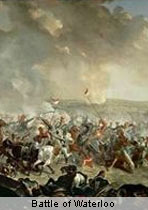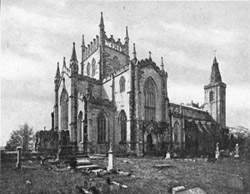WordPress database error: [Got error 28 from storage engine]
SELECT t.*, tt.*, tr.object_id FROM wp_terms AS t INNER JOIN wp_term_taxonomy AS tt ON tt.term_id = t.term_id INNER JOIN wp_term_relationships AS tr ON tr.term_taxonomy_id = tt.term_taxonomy_id WHERE tt.taxonomy IN ('category', 'post_tag', 'post_format') AND tr.object_id IN (19718) ORDER BY t.name ASC
Clan Colville History
The small Norman town of Colville-Sur-Mer is the source of this name. It’s most likely that they traveled over with William the Conqueror during the Norman Conquests. The Colvilles first appear in Scotland in the 12th century. Philip de Colville was listed as a witness on a charter from Malcolm IV to the Monastery of Dunfermline. Some time later he was held hostage (a very common practice in middle ages Europe), and later exchanged for the release of William the Lion in 1174. The Colvilles were granted baronies in Roxburghshire as well as other land in Ayrshire. Phillips son, William, later obtained the barony of Kinnaird in Stirlingshire.
in 1291 Sir Reginald Cheyne of Inverugie died. His widow was E’stace, heiress of Sir William Colville of Oxnam. She was one of the signators of the Ragman Roll. Despite this she is credited with raising the fortunes of the Colvilles. She made grants to the Abbey of Melrose which were later confirmed in 1324. In 1350 David II confirmed the barony of Ochiltree.
The Colvilles fell out with the Douglasses after the murder of John Auchinleck who had been a friend of the Earl of Douglas. the resulting feud destroyed much of the Colville estates and cost them the castle of Kinnaird which was taken by force. The Earl was in turn stabbed to death by the King at Stirling Castle. The Colville’s rebuilt their home in 1450 at a spot well away from the Auchinlecks.
Sir Robert Colville, was steward to Queen Margaret and master to the household of James the 4th. He raised an army from his estate to fight for the King. Most of his army were wiped out at Flodden in 1513 along with Sir Robert. Sir Robert’s son, Sir James Colville of Ochiltree was appointed to the Royal Household in 1527. Three years later in 1530 he exchanged lands with Hamilton of Finnart, swapping his estate at Ochiltree for the barony of East Wemyss and Lochorshyre in Fife. Alas he was later charged with treason and the estates were held by the Crown and not released until 1543.
Sir James Colville of Easter Wemyss fought in France for King Henry IV. In 1604 he was given the title of ‘Lord Colville of Culross’, which the chiefs still bear. The title of Lord Colville was lost in 1640 when the second Lord died without an heir. The title was not reinstated until 1723 when John Colville, ‘de jure’ was raised to the peerage.
 In 1746, Honorable Charles Colville fought at the Battle of Culloden, commanding the 21st Regiment of Foot. The Honorable Alexander Colville followed a naval career instead joining the navy in 1731. He was promoted to the rank of commodore and took the Northumberland to America in 1755. he was involved in the relief of Quebec which had been under siege by the French. After this he was raised to the rank of Vice Admiral. Sir Charles Colville was made Knight Grand Cross of the Order of the Bath after serving at the Battle of Waterloo and the Peninsular War. His son Charles was made peer after his death and was later created Viscount Colville of Culross.
In 1746, Honorable Charles Colville fought at the Battle of Culloden, commanding the 21st Regiment of Foot. The Honorable Alexander Colville followed a naval career instead joining the navy in 1731. He was promoted to the rank of commodore and took the Northumberland to America in 1755. he was involved in the relief of Quebec which had been under siege by the French. After this he was raised to the rank of Vice Admiral. Sir Charles Colville was made Knight Grand Cross of the Order of the Bath after serving at the Battle of Waterloo and the Peninsular War. His son Charles was made peer after his death and was later created Viscount Colville of Culross.
The town of Colville in northern Washington, U.S., is named after Sir Andrew Colville, who discovered a tribe in that region. The title Viscount Colville of Culross is one of several held by this family. The present Viscount (the thirteenth Lord Colville of Culross) succeeded to the title in 1945.
Clan Colville Posts







